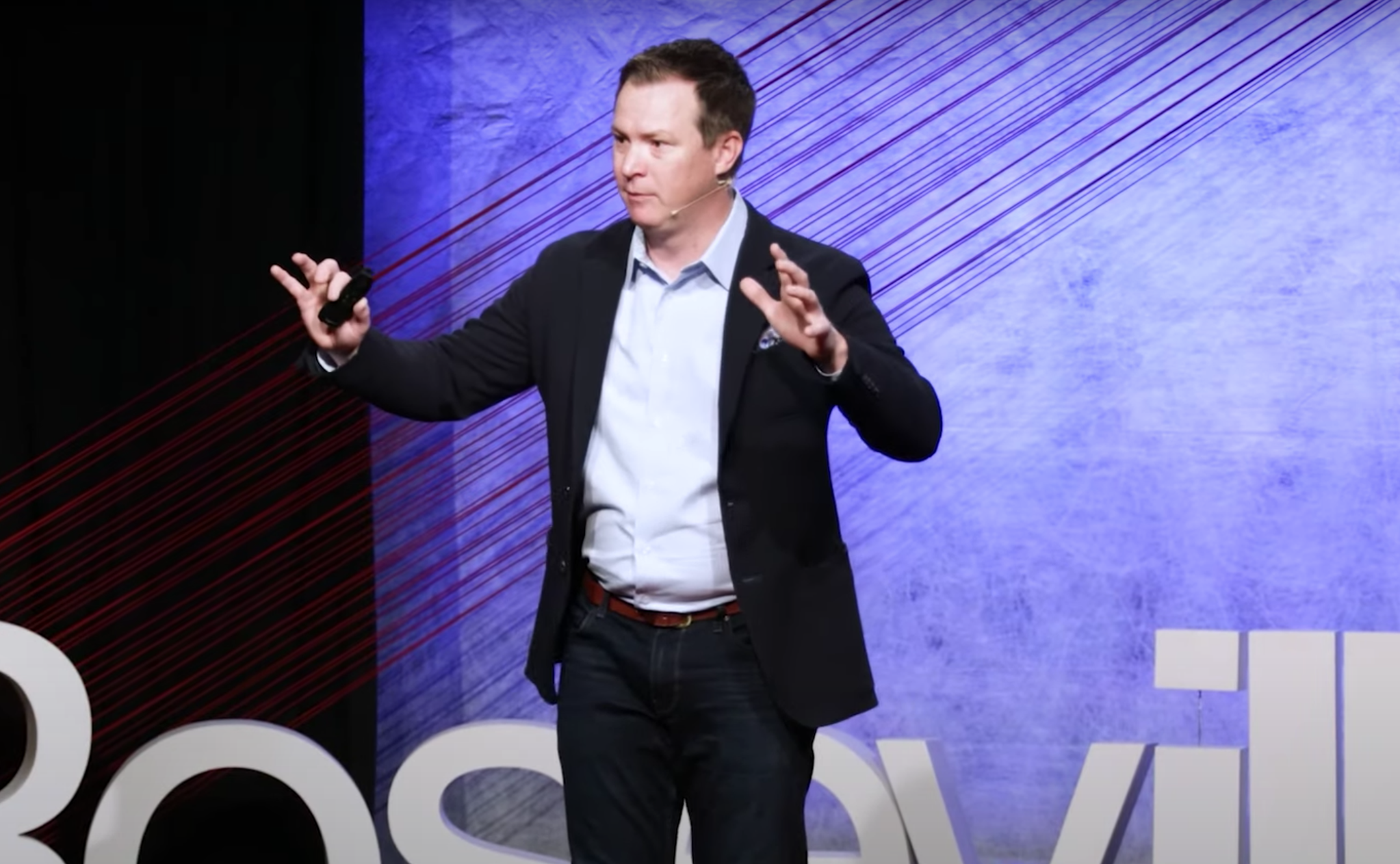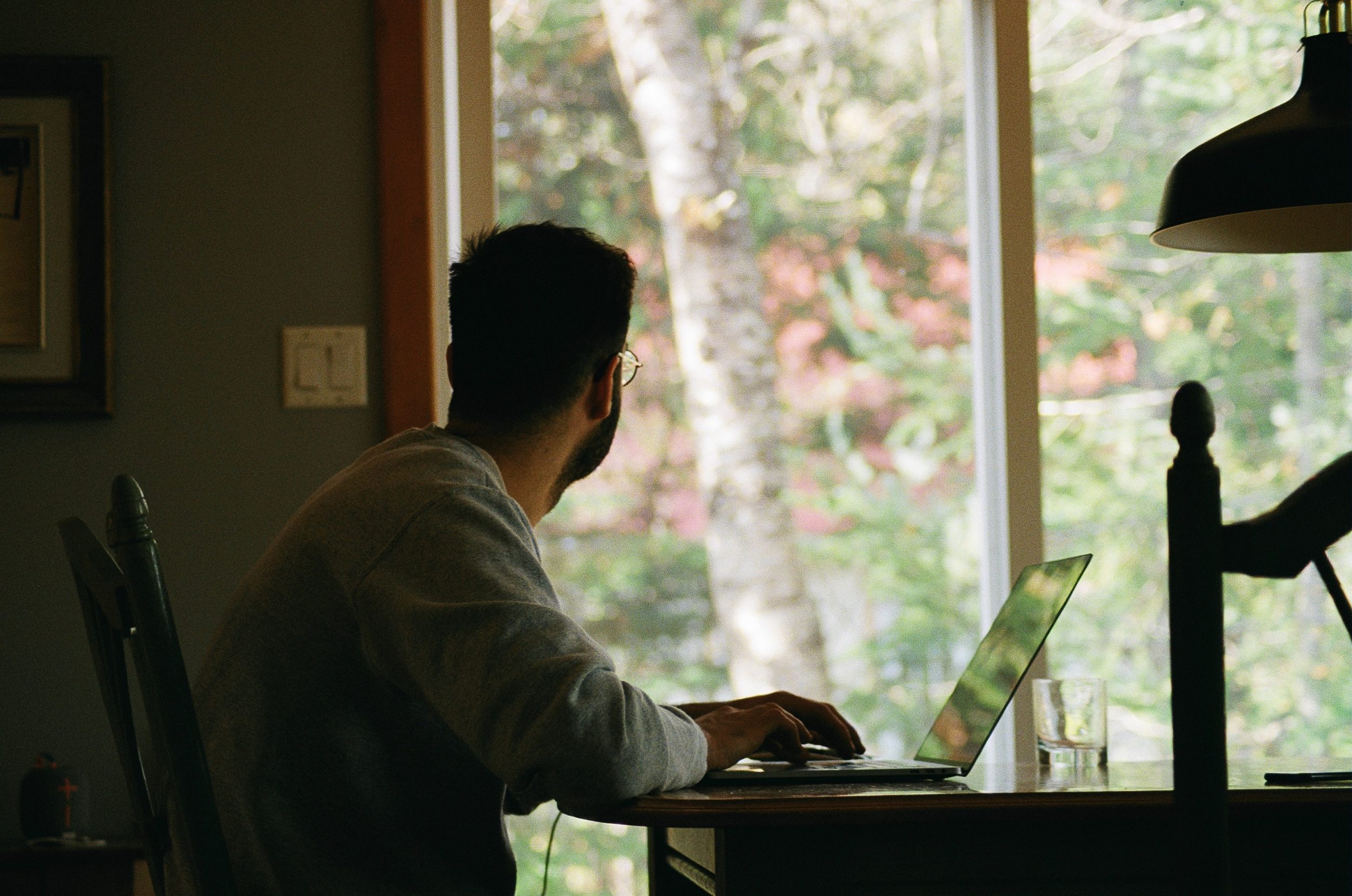
by Curt Steinhorst | Oct 27, 2021 | Speeches
I recently gave an 18-minute TED Talk on how to avoid burnout (and like work again). Please take a moment to watch it and let me have your feedback!
In the meantime, here are a few highlights and key points for you to consider.
The Current Situation
62% of people today are experiencing significant levels of burnout. Stress from the pandemic and work from home shifting the scale on work/life balance are among the major reasons, but an underlying problem is still relevant: our inability to focus at work. And when work is miserable, life is miserable. So, how do we enjoy work again?

It’s easy to get overwhelmed with distractions on the job.
Attention and the “Attention Economy”
Today, we live in an attention-based economy. Companies will go to great lengths to get your attention and keep it. Because they know that if they have your attention, they have your pocketbook.
Attention also shapes the quality of your work, the trajectory of your career, and even the depth of your relationships. What are you spending time on? How can you use your attention wisely?
Tips to Avoid Burnout
There are four key areas I found impact our ability to focus. I call these the four “C’s.”
- Capacity––the ability to get work done on time with a good mental state of mind.
- Clarity––defining what matters in our workload and why we’re doing it.
- Curiosity––harnessing the power of wanting to learn something new.
- Community––agreeing on what matters most with your coworkers.
Today’s workforce needs a check-in on mental capacity and high-level clarification about the importance of individual work. And if employees can embrace new challenges and engage with fellow coworkers, they are a lot closer to being able to enjoy work they do.
I also challenge you to consider the impact of a hybrid model on workers’ levels of burnout. A well-laid-out physical work environment is crucial to developing attention that lasts throughout a work day.

Curiosity fuels your desire to work.
Wrap-up
I don’t know how to help you enjoy your work all the time, but I can say it is possible to enjoy your work at any given time. By incorporating and developing these four areas in your work life, you will find yourself able to focus better on your assigned tasks and flourish within the workplace.
If you want to learn more about how to avoid burnout and the four “C’s” explained further, check out the link to my TED Talk at the beginning of this article. And if you feel your whole team or organization might benefit from a deeper understanding of clarity, capacity, curiosity, and community, and the role they play in increased productivity and job satisfaction, take a look at our FocusFit Challenge.

by Curt Steinhorst | Oct 14, 2021 | Workplace
Before the pandemic, converting office space into a better, more relaxed environment was a hot topic. Now more than ever, employers have to find a balance between meeting the needs of remote workers and those who have returned to the office. Open floor plan? Outdoor workspace? Glass walls? There are many options available for office conversion.. but how will you know what’s best for your employees and the company as a whole?
Design with Function and Focus in Mind
Workers today are no longer relegated to completing repetitive tasks that require them to sit in one place all day. In fact, the majority of work can be accomplished from home, as the pandemic has proven. But the return to the office requires a serious look at the Activity-Based Working (ABW) model. The goal of ABW is to create task-oriented solutions that encourage movement and empower people to select the right space for their current task.
I started to give this more thought when I found myself appreciating workplace expert Kay Sargent’s insightful comment about office space, “One size misfits all.” Sargent is the director of HOK’s online WorkPlace, where they advocate environments that create balanced spaces. In a column about office design that’s behind the times, she recently explained those balanced spaces as “a variety of settings that allow people the freedom to transition to the area that best supports the needs of the various tasks they engage in on a day-to-day basis.” These activity-based working spaces (ABWs) are a whole ecosystem of spaces, grouped and coordinated to serve the five major work functions, which HOK defines as solo work, collaboration, learning, socializing, and rejuvenation.
She’s not alone. In 2016 — before the pandemic — a national Gensler survey revealed that innovative companies are five times more likely to balance group and individual workspaces.
While individual focus and collaborative work are often thought to be opposites, Gensler’s research demonstrates that they function best as complements. Ultimately, workplaces designed to enable collaboration without sacrificing employees’ ability to focus are more successful. And this plays back to Sargent’s concept of designing (and embracing) offices that suit multiple needs and allow employees to use those areas as needed.

Incorporate regular movement within your workspace. Credit: Unsplash
Office Conversion to Encourage Movement
Encouraging movement within office space is crucial to long-term success. Here are some of the benefits organizations gain when their people move around…
- Retention of information increases. Looking at the ABW model, movement between different work areas is a chance to stimulate mental activity while simultaneously providing a break from a focus session. I’ve spoken before about the brain’s association between spaces and tasks, and how doing all tasks in one space actually works against the brain’s productive nature by failing to provide the physical transitions that cue new activity.
- Employees are healthier. People can get work done and exercise at the office. Provide options like standing desks, place water dispensers at the far side of the office, encourage lunch breaks outside, etc.
- Creativity levels are higher. Staring at a screen all day does not generally produce creative ideas. Getting up, moving around, talking to other people, and enjoying the outdoors are brain stimulators that produce creative thoughts. Breaks spent viewing or being surrounded by outdoor elements of nature — trees, water, birds — lower anxiety and provide a mental reset.
- It relieves stress. Research shows that exercise such as swimming, running, and hiking reduce stress, but something as simple as walking does the trick, too.

Natural light helps improve worker satisfaction and productivity. Credit: Unsplash
Matching the Space to the Task
I talk more in-depth on this subject in my book, Can I Have Your Attention? Here is an excerpt from the chapter on office space.
Employees have diverse space needs based on the variety and focus demands of their work. Some are rarely or never in the office and may not require assigned seating. Others need the continuity of their own desk and may rely more heavily on office services or support spaces… Most of us have a variety of tasks that demand different levels of focus and can benefit from a variety of spaces throughout the day.
The important thing to remember is this: do not impose a one-size-fits-all work environment on your people. Employees need different options to choose from when working through various tasks.
More focus-heavy, deadline-driven assignments are best done in an enclosed room, while brainstorming sessions and responding to emails can be accomplished in a communal space. Giving the employee their choice of work environment is beneficial for worker satisfaction and overall productivity. Less distraction = more focus, and more focus = better productivity.

A step toward office conversion is working outside. Credit: Unsplash
Practical Steps for Office Conversion
It may seem daunting at first, but converting office space for the good of your employees will benefit any company in the long run. Some short-term and long-term solutions include:
- Create/label different “zones” within the workplace.
- Convert a spare office into a “vault” — a space where workers can achieve full focus with no interruptions.
- Invest in demountable walls.
- Provide more light (preferably natural, but artificial can substitute).
- If outdoor space is available, designate an area for working outside.
Open floor plans, cubicles, and remote work all have their pros and cons. Taking the best attributes of each and applying it to an overall office space strategy will make for more focused employees.
Here are four tips to get started:
- If you have an area with lots of natural light, try to set it aside as a meeting space where employees can bounce ideas off of each other.
- Install cubicles to filter out visual distraction when employees need an increased level of concentration.
- Have a room (or multiple rooms) set aside to block out noise and create an atmosphere for intense focus.
- Finally, support the option to work remotely so that an employee can work from the comfort of their home if they decide that’s their best option.
The Focuswise Space
A 2021 Gensler survey found that the majority of employees at top-performing companies consider their company’s workplace to be the best place for a wide range of work activities. For instance, 56% said the office was best for brainstorming with coworkers, while 27% would rather attend a video conference for meetings at home. For anything other than reading, respondents generally preferred their company’s office — but writing and reflecting also scored notably high in the preference for working away from the office. Workers also expressed moderate interest in working from third places or co-working locations.
What can we see from this research? Employees returning to the office after the pandemic want variety within their workplace — and need it for focus and productivity. I call spaces that plan for these needs focuswise spaces because they reduce costs and turnover in the long run. Also, they make the office a perk, a pressure value, and a place to gather intentionally, occasionally, and enjoyably. Office conversion for employees’ best interests will serve employers’ best interests because these spaces promote stimulation, focus, well-being, and productivity while reducing stress. Above all, the concept of activity-based workspaces helps leaders create offices that are meaningful tools for their employees rather than just real estate investments where, increasingly, “one size misfits all.”









